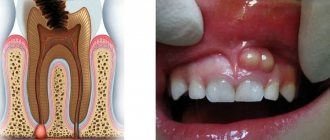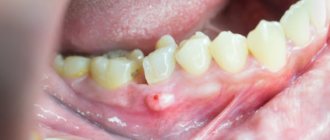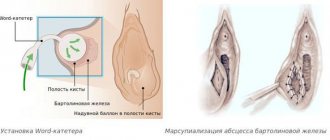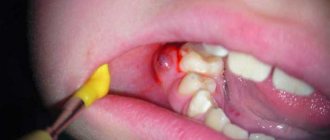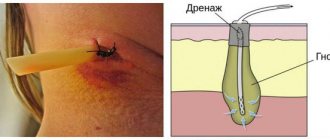Most often, a sore throat is associated with viral inflammation, which is accompanied by fever, cough, runny nose and minor difficulty swallowing. But, unfortunately, in some situations these diseases can be complicated by the development of purulent-inflammatory complications, for example, peritonsillar abscess, and the task of the ENT doctor at the present stage is the correct diagnosis of this complication and timely treatment, because this complication does not tolerate deposits and is fraught with more significant spread of infection into the deep tissues of the neck. At the GMS Hospital Otolaryngology Center, a comprehensive approach is used to treat peritonsillar abscesses, combining conservative and surgical techniques.
More about the disease
Peritonsillitis is an acute condition secondary to tonsillitis or tonsillopharyngitis, which results in the penetration of an infectious agent (bacteria) into the loose peritonsillar tissue (peritonsillar space). The process is always one-sided, as a result of which it has certain symptoms:
- pain or increased pain on one side;
- severe difficulty swallowing;
- swelling and bulging on the neck on one side;
- asymmetry and bulging of pharynx tissues.
A peritonsillar abscess occurs when a cavity filled with pus forms, located in the peritonsillar (peritonsillar) tissues.
It can form several days after the development of a sore throat or an exacerbation of tonsillitis. Less commonly, due to traumatic injury to the oropharynx or penetration of a foreign body into the tissue around the tonsils. In people with a weak immune system, an abscess can form within a day. It is more often unilateral, but cases with bilateral paratonsillar abscess have been reported in the literature. This pathology is one of the most severe purulent lesions of the oropharynx. With further spread, the infection moves into the deep tissues of the neck (parapharyngeal space), which can lead to a life-threatening condition. Depending on their location, there are several forms of peritonsillar abscess, but all of them require surgical treatment.
The Surgical Otolaryngology Center at GMS Hospital provides proper treatment and diagnosis of paratonsilitis and paratonsillar abscess of any form. Treatment tactics are selected by specialists individually, depending on the stage of the disease, the presence of complications and concomitant pathologies.
Types of disease
The inflammatory process can occur on the left or right in the pharynx. Such inflammation is called one-sided - respectively, a left-sided or right-sided abscess. If inflammation occurs on both the left and right at the same time, this is a bilateral type of inflammation.
If we take the location of the purulent “pocket” as the basis for the classification, the following types of disease are distinguished:
- anterior - the most common type of diagnosis; the tissues above the tonsils become inflamed;
- posterior, when purulent inflammation occurs between the posterior palatine arch and the tonsil; such inflammation can spread to the larynx;
- lower, when inflammation is located at the lower pole of the tonsil, while the anterior palatine arch moves forward and downward;
- external (lateral) - a less common, but most severe type, in which a suppurating cavity appears between the edge of the tonsil and the wall of the pharynx. With this form of the disease, pus can break into healthy tissue in the neck.
Why is it necessary to open and drain a peritonsillar abscess?
Peritonsillar abscess is an urgent condition in otolaryngology. The proximity of vital structures (windpipe, large vessels of the head and neck) requires immediate diagnosis and treatment. In the initial stages, when an abscess has not yet formed, the pathology responds well to drug therapy. A course of antibiotic therapy, anti-inflammatory and painkillers is prescribed. If conservative treatment is ineffective, the abscess is opened surgically.
Peritonsillar abscess is dangerous due to its complications, fraught with the development of phlegmon, mediastinitis and even sepsis. The Otolaryngology Department at the GMS Clinic has everything you need to accurately diagnose and treat peritonsillar abscesses.
The opening of the abscess is carried out using modern surgical equipment. During the operation, the potential of laser and radio wave surgery is actively used, which allows the procedure to be performed in the most gentle manner, eliminating the development of surgical complications. Opening abscesses in children is performed under anesthesia, which significantly increases the comfort of the intervention.
Causes of throat abscess
In children, the most common cause of abscess development is an infection caused by streptococcus, staphylococcus, and, less commonly, E. coli. The disease is almost always secondary to the pathology that provoked it. The infection enters the throat through the lymphatic tract, so nearby lymph nodes are always affected and inflamed.
Primary foci of infection in childhood:
- Purulent otitis;
- Mastoiditis;
- Parotitis occurring with complications;
- Rhinitis;
- Pharyngitis;
- Complications of acute infectious diseases (influenza, ARVI, measles, scarlet fever, diphtheria);
- Complications after surgery (adenotomy, tonsillectomy).
The rapid development of the inflammatory process is facilitated by reduced immunity, rickets and a history of diathesis in the child.
In adults, the formation of a pharyngeal abscess most often occurs due to tissue trauma.
Causes of throat abscess in adults:
- Damage to the throat from rough food, bone, or foreign object;
- Trauma to the mucous membrane of the throat after gastroscopy, bronchoscopy, endotracheal anesthesia;
- Complication after tonsillitis;
- Consequence of tuberculosis, syphilis;
- Presence of caries.
The rapid spread of infection is facilitated by a history of HIV infection, diabetes mellitus, malignant tumor, somatic diseases, or any process that reduces immunity in an adult. The causes of purulent inflammation in the throat cannot be strictly limited to age categories. Predisposing factors from each group can occur at any age.
Cost of treating peritonsillar abscess
The prices indicated in the price list may differ from the actual prices. Please check the current cost by calling +7 495 104 8605 (24 hours a day) or at the GMS Hospital clinic at the address: Moscow, st. Kalanchevskaya, 45.
| Name | Price |
| Opening of the epiglottis abscess | RUB 54,999 |
| Opening abscesses, phlegmon of the laryngopharynx | RUB 64,995 |
| Opening a paratonsillar or retropharyngeal abscess | RUB 46,998 |
| Drainage of peritonsillar abscess | RUB 24,997 |
| Tonsillectomy + removal of peritonsillar abscess (According to Quinzey) | RUB 189,994 |
Dear Clients! Each case is individual and the final cost of your treatment can only be found out after an in-person visit to a GMS Hospital doctor. Prices for the most popular services are indicated with a 30% discount, which is valid when paying in cash or by credit card. You can be served under a VHI policy, pay separately for each visit, sign an agreement for an annual medical program, or make a deposit and receive services at a discount. On weekends and holidays, the clinic reserves the right to charge additional payments according to the current price list. Services are provided on the basis of a concluded contract.
Plastic cards MasterCard, VISA, Maestro, MIR are accepted for payment. Contactless payment with Apple Pay, Google Pay and Android Pay cards is also available.
Western standards of treatment (evidence-based medicine)
Continuous staff development
Regular interaction with leading Russian and foreign medical institutions
Modern medical equipment and advanced diagnostic and treatment methods
Unified standard of service
We work around the clock 24/7/365
Make an appointment We will be happy to answer any questions Coordinator Oksana
Preparing for surgery
Surgery is performed only when the abscess is “ripe,” that is, a purulent pocket is completely formed. This usually occurs on the 5th day after tonsil swelling occurs.
Checking the readiness of the cavity for opening is carried out by a diagnostic puncture. Using a large needle, a puncture is made in the place that sticks out the most. All manipulations are controlled by an ultrasound machine or endoscopic observation. If pus is detected in the sample, it means that the abscess is ripe for surgery.
If necessary, a blood test is prescribed, as well as a culture to determine the pathogen and check for resistance to antibacterial drugs.
After the examination, the patient is sent to the operating room, where the abscess will be surgically opened.
Signs and symptoms of paratonsillitis
The disease has an abrupt onset. An abscess forms a few days after an exacerbation of tonsillitis or the onset of a sore throat and is accompanied by vivid symptoms:
- acute pain in the throat, radiating to the jaw or ear;
- sensation of a “lump” in the throat;
- fever (temperature 39-40°C);
- submandibular lymph nodes are greatly enlarged;
- difficulty swallowing (even drinks);
- the appearance of a repulsive odor from the mouth;
- neck pain that gets worse with exercise;
- general weakness;
- inability to fully open the mouth;
- headache;
- speech impairment (voice as if there is a hot potato in the mouth);
- difficulty breathing (with large ulcers).
Spontaneous breakthrough of suppuration into the throat cavity is accompanied by an improvement in well-being and the appearance of an admixture of pus in the saliva.
The spread of the abscess contents into the peripharyngeal space significantly worsens the condition, so there is no need to delay operations to open the abscess. If you have even one of the symptoms listed above, schedule a consultation with an otolaryngologist today. Doctors at the Center for Operative Otolaryngology at GMS Hospital use gentle microsurgical techniques, which contributes to a speedy recovery and the absence of relapses of the disease.
Clinical picture
ENT patients mainly complain of a sensation of a foreign body in the throat and larynx and pain, which becomes much stronger when eating. In some cases, the pain is so severe that swallowing becomes impossible. During examination of the larynx, a limited area of inflamed mucous membrane is observed, and in its center a focus of inflammation is clearly visible. As the disease develops in the arytenoid cartilage or epiglottis, their mobility sharply decreases. In the absence of timely treatment, acute laryngeal stenosis may develop.
Friends! Timely and correct treatment will ensure you a speedy recovery!
Diagnostics
For the differential diagnosis of paratonsillitis, the following research methods are used:
- examination by an otolaryngologist;
- laryngoscopy;
- pharyngoscopy;
- laboratory tests (blood tests, culture for flora and sensitivity to antibiotics, etc.).
In some cases, to clarify the diagnosis, additional studies are performed - ultrasound, CT scan of the soft tissues of the head and neck.
A comprehensive examination allows you to assess the condition of the abscess and tonsil, determine treatment tactics and the scope of intervention. You can complete all the required tests at the GMS clinic in a day.
Indications for autopsy
Drug therapy is possible only at the stage of paratonsillitis, when there is inflammation, but there is no abscess yet. If antibiotic therapy was not carried out in the first two to three days, the abscess will need to be opened. At the stage of purulent inflammation, conservative treatment will not give a positive result.
In 25% of cases, the abscess opens on its own without surgical intervention. At the same time, the temperature drops sharply, the pain goes away and recovery occurs. But if this does not happen, then the patient is shown opening the abscess cavity with a scalpel.
If the operation is not performed, then the purulent inflammation can go further, which poses a danger to life.
Treatment methods
The treatment tactics for paratonsillitis depend on the extent of the spread of the purulent process and the presence of complications. Peritonsillitis in the initial stage is treated conservatively, with antibiotics, decongestants, painkillers and anti-inflammatory drugs. If drug treatment is ineffective or an abscess forms, the abscess is surgically opened and its cavity is drained. The opening of the paratonsillar abscess is carried out under local anesthesia. The otolaryngologist dissects the wall of the abscess, removes the purulent contents, and rinses the cavity with an antiseptic. An improvement in the condition is observed immediately after opening and draining the abscess.
You have questions? We will be happy to answer any questions Coordinator Tatyana
Complications
The development of a purulent inflammatory process leads to severe complications:
- Bronchopneumonia as a result of infection spreading through the upper respiratory tract;
- Congestive pneumonia due to respiratory failure;
- Brain abscess, purulent meningitis due to the spread of infection into the cranial cavity through the circulatory system;
- Cardiac arrest;
- Asphyxia (suffocation) due to blocking of the trachea by an abscess, swelling of the larynx, pouring of purulent masses into the larynx during independent opening of the formation;
- Purulent mediastinitis – spread of infection into the mediastinum;
- Phlebitis;
- Jugular vein thrombosis;
- Arrosive bleeding due to purulent fusion of blood vessels;
- Sepsis (blood poisoning).
Prevention of paratonsillitis
The following simple preventive measures will help prevent the development of peritonsillar abscess:
- strengthening the immune system;
- healthy lifestyle;
- timely treatment of acute and chronic diseases of the ENT organs (sinusitis, adenoids, pharyngitis, tonsillitis, etc.), caries;
- rejection of bad habits.
In the presence of recurrent abscesses, elective tonsillectomy is recommended.
Opening a peritonsillar abscess at the GMS clinic is a simple and safe surgical procedure that is performed in an outpatient or inpatient setting. Recovery takes 10-14 days, after which you will return to your normal life. You can make an appointment with an otolaryngologist at GMS Hospital by phone or using an online application.
Symptoms of a throat abscess
Any form of throat abscess begins with a sharp increase in body temperature to critical values – 39-40°C. The febrile state is accompanied by a deterioration in the general condition.
Symptoms and manifestations of throat abscess:
- Children have tearfulness and anxiety, loss of appetite, restless sleep;
- In infants - impaired sucking;
- Increased pain when swallowing food and saliva;
- Impaired nasal breathing due to damage to the upper pharynx;
- Nasal voice;
- Attacks of suffocation when the abscess is localized in the middle and lower part of the pharynx;
- Impaired breathing in an upright position due to pus flowing down the wall of the larynx, closing the lumen of the trachea;
- Hoarseness of voice;
- Bubbling in the throat during sleep;
- Swelling and tenderness of the occipital and upper cervical occipital lymph nodes;
- Swelling of the neck in the area of the lower jaw.
Due to severe pain, the patient takes a forced position when his head is turned towards the affected side and slightly thrown back.


